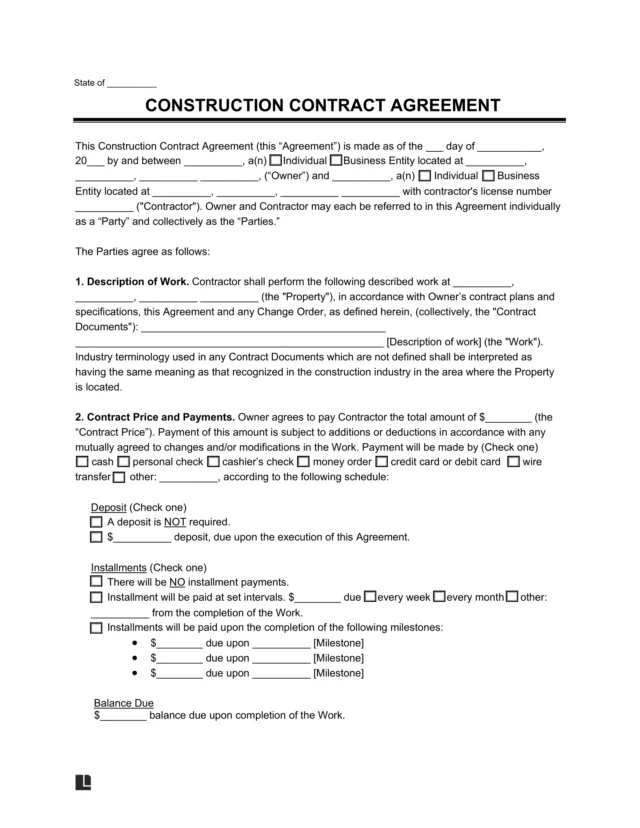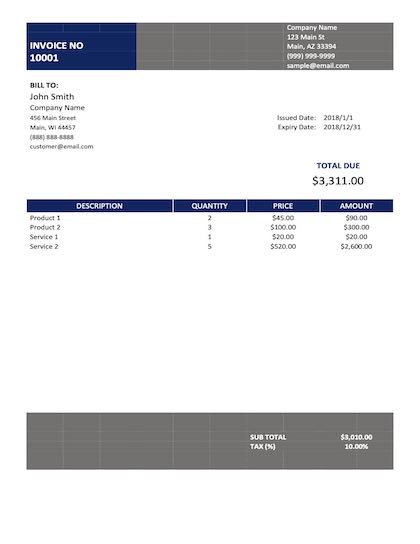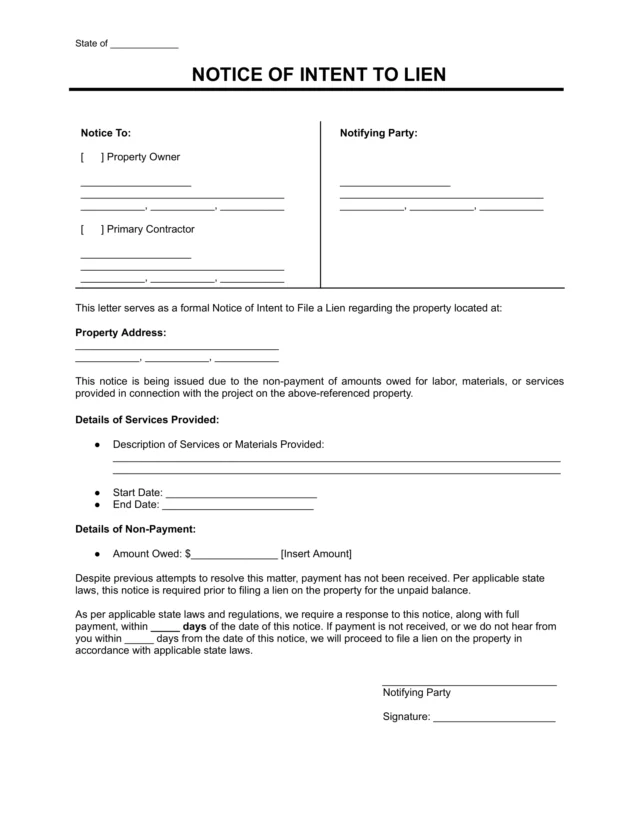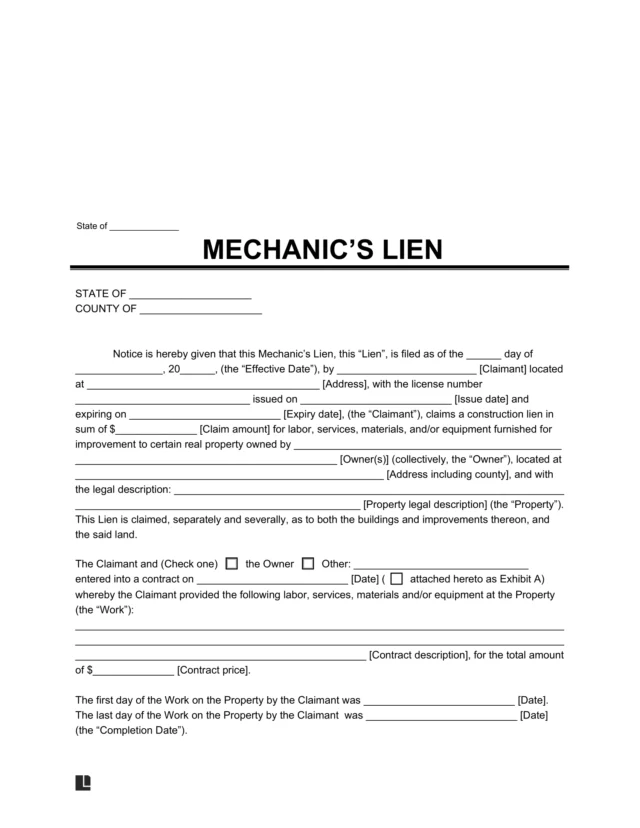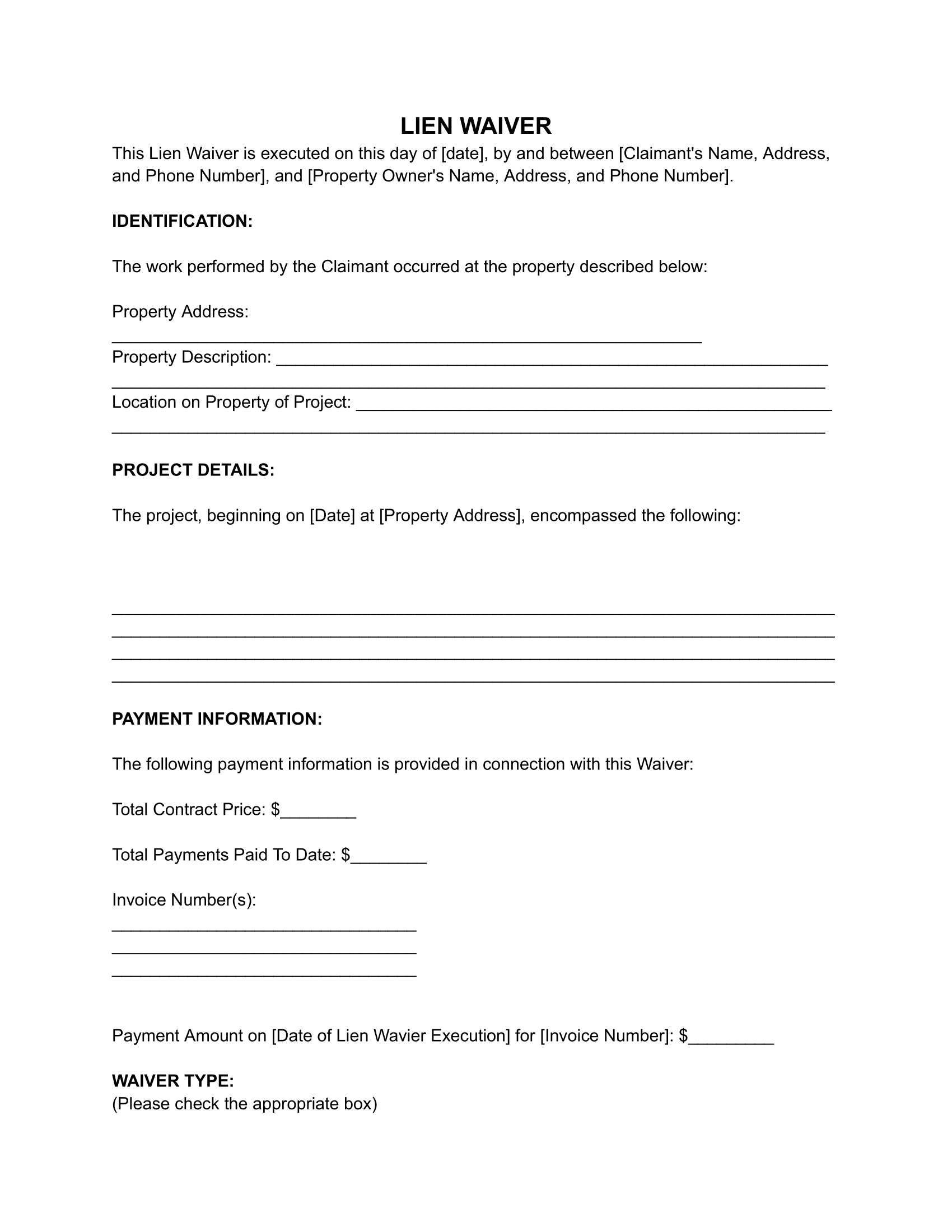What Is a Lien Waiver?
A lien waiver is a legal document that waives a construction service provider’s right to file a lien on an owner’s property. It serves as a receipt, verifying that the property owner paid for services or materials. The service provider usually fills out a lien waiver when they complete their services and get paid.
A lien waiver encourages owners to pay on time, preventing a lien from being placed on their property. Without paying, they risk a lien, which prohibits them from selling or refinancing their property. Failure to pay may also result in the property being sold to satisfy the construction debt.
Types of Lien Waivers
Liens can fall into one of two main categories, depending on whether they rely on payment:
- Conditional lien waiver: It becomes effective only after the contractor is paid. The contractor can still file a lien if they aren’t paid.
- Unconditional lien waiver: It becomes effective when the contractor signs it. Even if they aren’t paid, they cannot file a lien on the property.
You can also classify a lien waiver as a partial or full waiver:
- Partial lien waiver: This is relevant when the property owner makes partial (progress) payments. It releases lien rights for a specific amount of work or materials that the property owner paid for.
- Full lien waiver: A full lien waiver releases all lien rights when the property owner pays for the entire project amount.
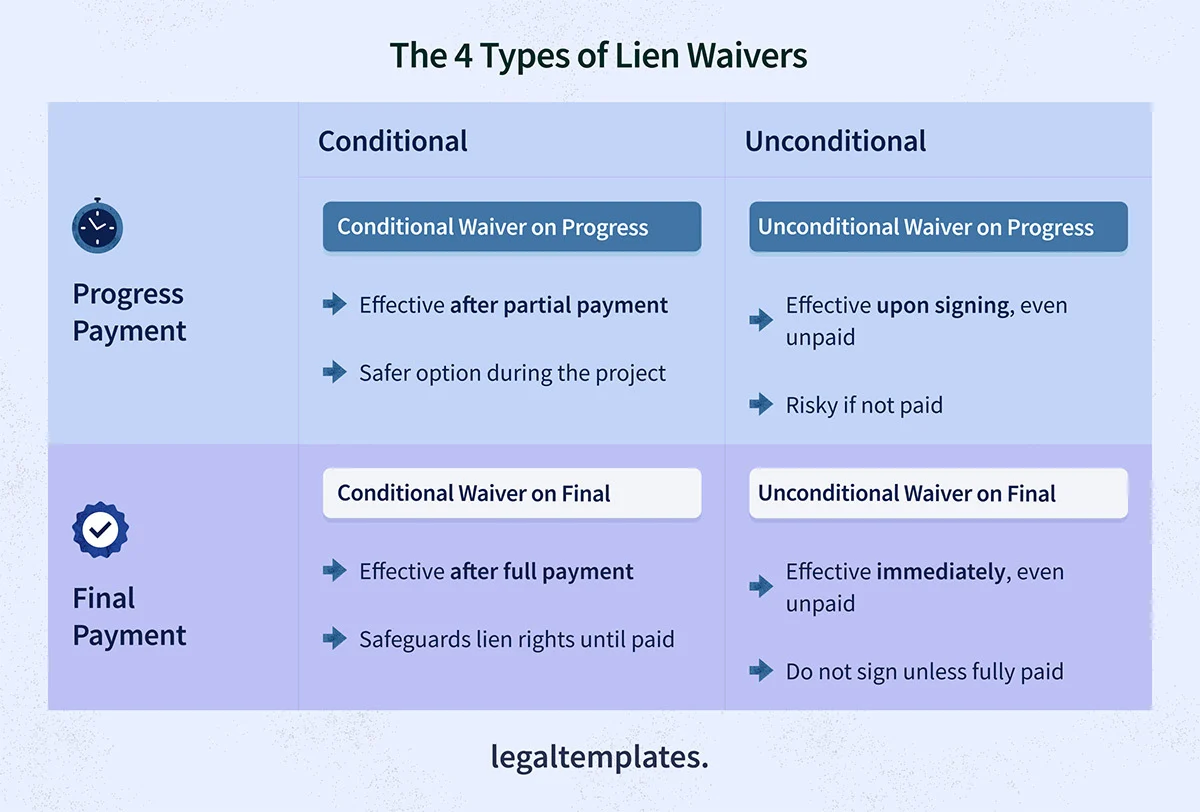
Lien Waiver vs. Lien Release
The primary difference between a construction lien waiver form and a release is whether a lien has already been filed. A lien waiver applies before a lien is placed on a property. Generally, if the client adheres to the agreed payment process or if an unconditional waiver was signed, the claimant will not file a lien.
A lien release, or lien cancellation, occurs after a lien has already been filed. If a claimant has filed a lien on the property for non-payment, the client will usually have to pay them for their products or services to have the lien released.
The time and effort involved in releasing a lien makes lien waivers especially useful for contractors and their clients.
Statutory Lien Waivers: By State
In some states, you can use a generic lien waiver template. However, 12 states have statutory forms that include specific wording:
- Arizona: AZ Rev Stat § 33-1008
- California: CA Civ Code §§ 8132, 8134, 8136, 8138
- Florida: FL Stat § 713.20
- Georgia: GA Code § 44-14-366
- Massachusetts: MA Gen L ch 254 § 32
- Michigan: MI Comp L § 570.1115
- Mississippi: MS Code § 85-7-433
- Missouri: MO Rev Stat § 429.016
- Nevada: NV Rev Stat § 108.2457
- Texas: TX Prop § 53.284
- Utah: UT Code § 38-1a-802
- Wyoming: WY Stat § 29-10-101
Waivers provided by the states will cover specific legal requirements, but you should include details for your particular project. Thoroughly review the agreement terms before signing.
How to Fill Out a Waiver of Lien
Before you sign a waiver, ensure that the document clearly outlines the terms, including amounts owed for services and products provided. To write an effective lien waiver for your project, follow these steps:
Step 1 – Name the Parties
Identify the property owner and give their address to clarify who they are. Specify if the claimant is an individual or an entity. If they’re an entity, list the name and title of the relevant representative.
Step 2 – Identify the Property
Give the address of the property where the work was performed or services were provided under the service contract. Include a legal description or other identifiers in public records. More details will help define the property’s boundaries precisely.
Step 3 – Add Project Information
Specify where the project was performed, such as in the kitchen, the backyard, or the upstairs bathroom. Describe the work performed or materials provided in detail, ensuring that all aspects of the project are captured. You should also include the date that the work began and ended.
Most states have statutes requiring a lien to be filed within a specified time after the project is complete. Ensure you comply with your state’s laws.
Step 4 – Provide Payment Details
Use your waiver of lien form to denote payment details, such as the following:
- The total cost of the construction work
- The amount already paid before the waiver’s execution
- Invoice numbers of the payments already made
- The amount that will be paid on the execution of the lien waiver
Step 5 – Denote Waiver Types
Categorize the contractor lien waiver form as either conditional or unconditional. Also, explain whether future payments will be expected after the waiver’s execution.
Finally, clarify whether the waiver will be subject to exceptions. For example, you can state that it will be unenforceable if there are unpaid materials or faulty/incomplete work.
Step 6 – Sign, Date, and Notarize
Sign your name as the claimant and date the lien waiver. Notarize if needed.
Most states do not require notarization of contractor lien waiver forms. However, Wyoming (WY Stat § 29-10-101) and Mississippi (MS Code § 85-7-433) do. Texas only requires notarization for lien waivers entered into before January 1, 2022. Texas HB 2237 eliminated the notarization requirement for later projects.
Sample Lien Waiver
Learn what a simple lien waiver form looks like by viewing a sample below. Use a state-specific form if needed, but you can fill out our generic printable lien waiver form if you live in a state without statutory requirements. Download it in PDF or Word format.




